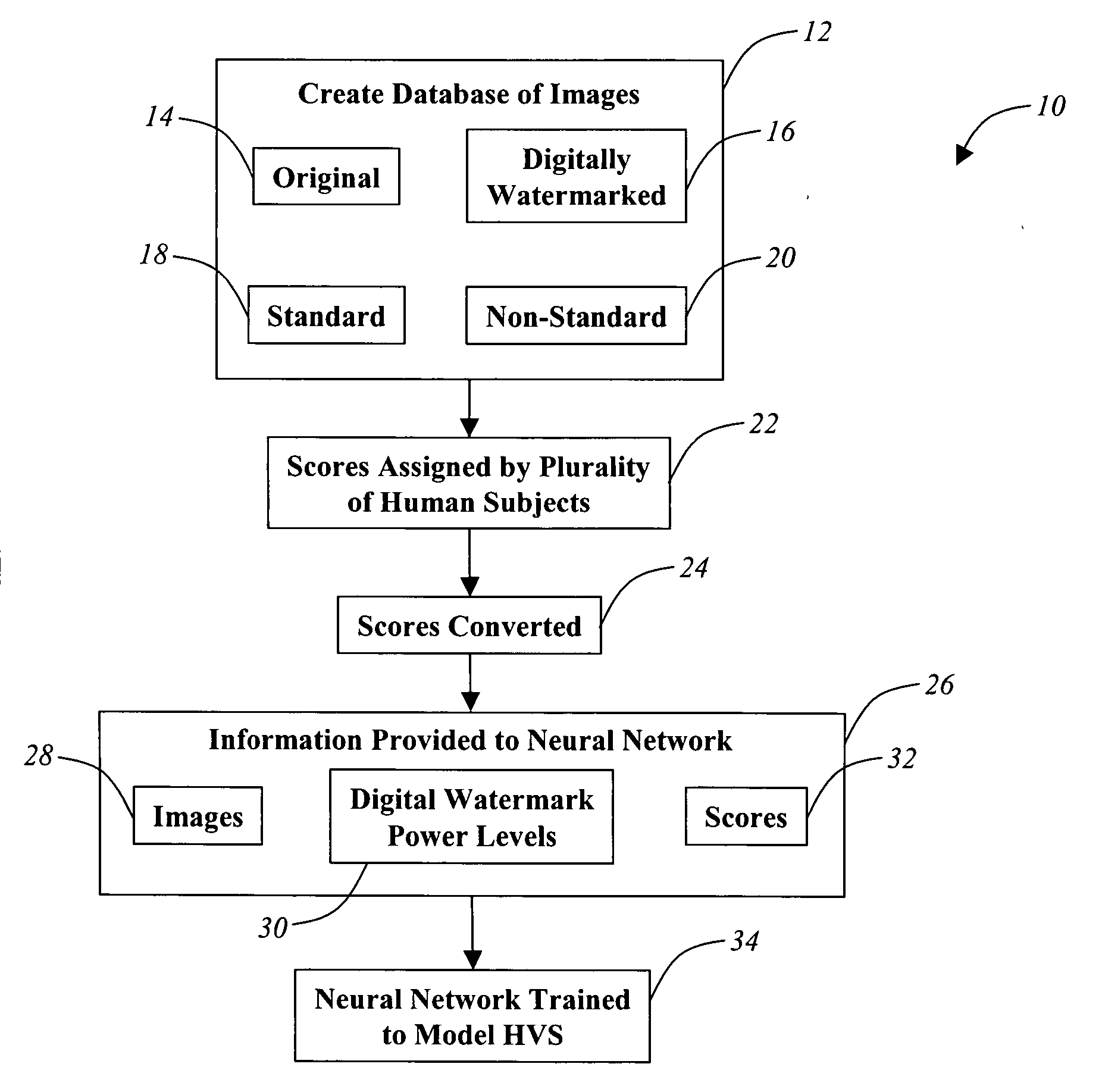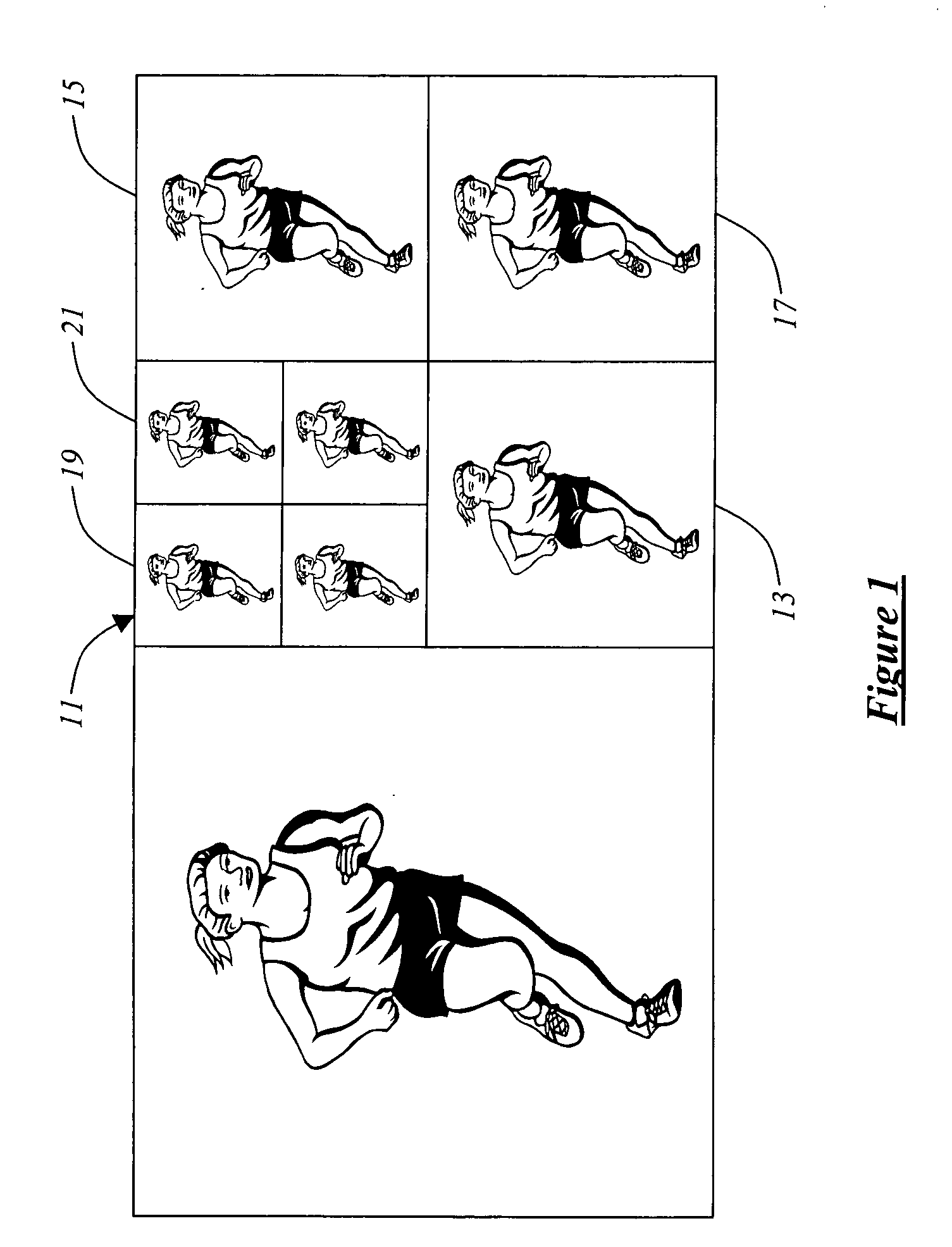Automated digital watermarking methods using neural networks
a neural network and automatic technology, applied in the field of digital information security, can solve the problems of inability to be adequately automated, labor-intensive conventional digital watermarking methods, lack of automaticity, etc., and achieve the effect of optimizing the strength of digital watermarks
- Summary
- Abstract
- Description
- Claims
- Application Information
AI Technical Summary
Benefits of technology
Problems solved by technology
Method used
Image
Examples
Embodiment Construction
[0017] In a variety of embodiments and examples, the present invention provides automated methods, systems, and computer-readable media for digital watermarking using neural networks. In the description that follows, specific details are set forth in order to provide a thorough understanding of the present invention. It will be obvious, however, to one of ordinary skill in the art that the methods, systems, and computer-readable media of the present invention may be practiced with or without the inclusion of some or all of these specific details. For example, although the description that follows focuses on using a discrete wavelet transform (DWT) for the space-frequency decomposition of an image or other production, any other suitable frequency transformation may be used, including a discrete Fourier transform (DFT) or a discrete cosine transform (DCT). Likewise, although the description that follows focuses on the digital watermarking of “images,” any other suitable production may...
PUM
 Login to View More
Login to View More Abstract
Description
Claims
Application Information
 Login to View More
Login to View More - R&D
- Intellectual Property
- Life Sciences
- Materials
- Tech Scout
- Unparalleled Data Quality
- Higher Quality Content
- 60% Fewer Hallucinations
Browse by: Latest US Patents, China's latest patents, Technical Efficacy Thesaurus, Application Domain, Technology Topic, Popular Technical Reports.
© 2025 PatSnap. All rights reserved.Legal|Privacy policy|Modern Slavery Act Transparency Statement|Sitemap|About US| Contact US: help@patsnap.com



